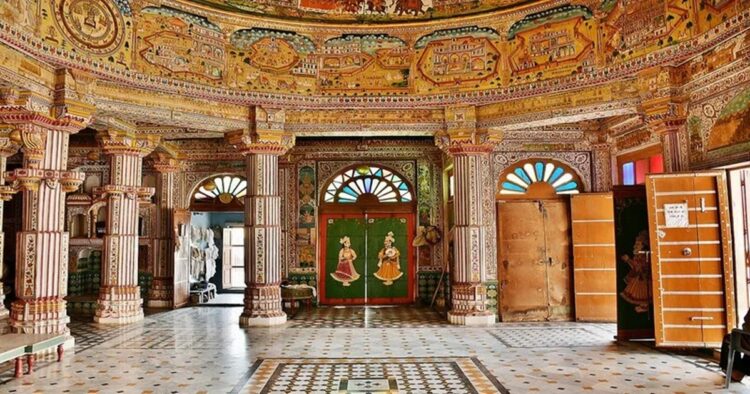The Bhandasar Jain Mandir, an architectural splendour, stands in the heart of Bikaner, Rajasthan. It was built with 40,000 kilograms of ghee. It was constructed in the 12th century by the wealthy Jain merchant Bhandasa Oswal, the Bhandasar Jain Mandir boasts a history, specifically regarding its unique construction method. During a severe drought, when water was scarce, Oswal opted to use ghee, a form of clarified butter, as a substitute for water in the Mandir’s mortar.
Around 40,000 kilograms of ghee were utilized, resulting in a foundation that has withstood the test of time. It is believed that on hot days, some ghee seeps through the Mandir floor. The Mandir is a three-storey structure built from red sandstone, featuring intricate yellow-stone carvings on its walls, pillars and mandapa. The sanctum, follows a pancharatha design and is topped with a shikhara adorned with karna-amalakas and amalakas.
Its walls are beautifully decorated with leaf paintings, frescoes, and ornate mirror work that illustrate the lives of the 24 Tirthankaras, enhancing the Mandir;s spiritual atmosphere. The Bhandasar Jain Mandir serves as both a religious site and a cultural hub. It is preserved for future generations to enjoy and is protected by the Archaeological Survey of India. The Mandir’s artwork and architecture attract visitors from around the globe, who came to admire its beauty and explore its rich history.
The use of ghee in the Mandir’s construction is more than just a historical detail; it represents the dedication of its builders. The Mandir’s existence challenges the harsh climatic conditions of Rajasthan and stands as a symbol of the enduring spirit of its people. The Bhandasar Jain Mandir goes beyond mere architecture; it tells a story of faith, resilience and creative ingenuity. The Mandir remains a source of inspiration and a true gem in the rich heritage of Jain architec

















Comments